NYFF60 Hong Sang-soo's Camera Stylo: The Novelist's Film ★★★★☆
New York Film Festival 2022 (9/30-10/16)
'The Novelist's Film (소설가의 영화) ★★★★☆
A Film Director's Pen is Camera (Camera Stylo)
"Fiction is Prose, Film is Poetry"
*'The Novelist's Film' review ★★★★☆ <Korean version>
http://www.nyculturebeat.com/?mid=Film2&document_srl=4079962
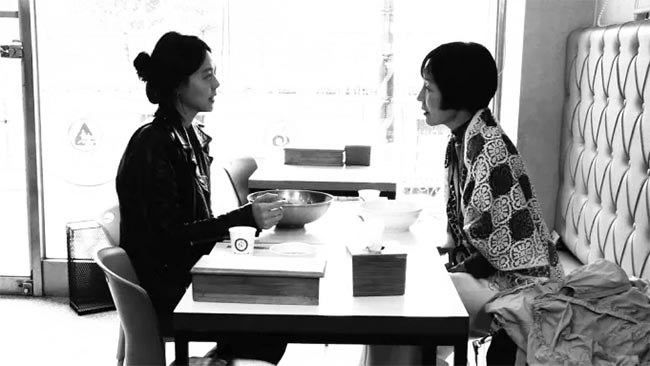
*소설가의 영화 예고편 The Novelist's Film trailer
Director Hong Sang-soo’s black-and-white films “The Novelist’s Film (소설가의 영화)” and “Walk Up (탑)” were chosen for and screened at the 2022 New York Film Festival (9/30-10/16). These are his 18th and 19th films shown at the Festival, which makes Hong the most screened director in the 60-year history of NYFF.
Hong Sang-soo, the master of low-budget films, is a cinema minimalist. He works with a minimal number of actors (Hong and Company), and is in charge of not only producing, writing, directing, but also filming, editing and music. Until a few years ago, his subject was love stories, revealing the desires of men and the snobbery of intellectuals/artists. He used to be referred to as the “Eric Rohmer of Korea.” His recent films have gone beyond failed love stories. In those recent films, Hong has surpassed Rohmer’s orbit and he explores "what is cinema" and "who are human beings"
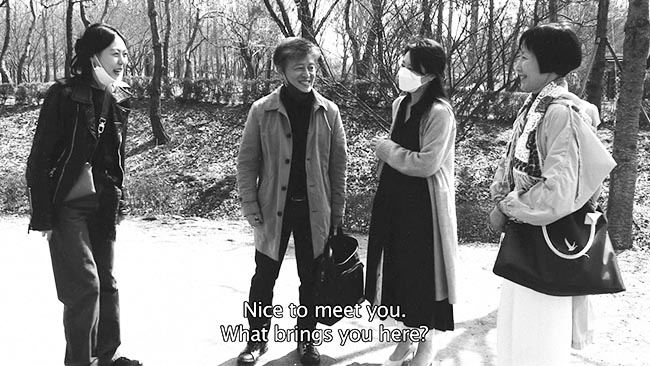
The Novelist's Film
In Hong’s 27th film “The Novelist’s Film,” winner of the Silver Bear Grand Jury Prize at this year’s Berlin Film Festival, the meeting unfolds like a Möbius strip. A popular novelist Junhee (Lee Hye-young), who is suffering from writer’s block, visits a bookstore near Seoul (Hanam) run by her junior colleague (Seo Younghwa), and then meets a movie director couple (Kwon Haehyo and Jo Yoonhee) at an observatory in a nearby tower (Hanam Union Tower). They meet a former movie star Gilsoo (Kim Minhee) in the park, to whom Junhee proposes to make a film with her.
Many film directors adapt novels, but not many filmmakers are former novelists. Examples include Lee Chang-dong, Marguerite Duras of France, and Ousmane Sembène of Senegal. Before his directorial debut, Hong Sang-soo had intensively explored Korean novelists as a PD(program director) on SBS-TV’s “Writers and Top Works.” In 1996, Hong made his debut with “The Day a Pig Fell into the Well,” an adaptation of Goo Hyo-seo’s novel “A Strange Summer.” Hong actually wrote a completely different screenplay in a major adaptation of the book, which tells the story of a third-rate novelist. “Pig...” is the only film out of Hong’s 28 works that is based on a novel. The male protagonists in his films are often film directors or novelists, however.
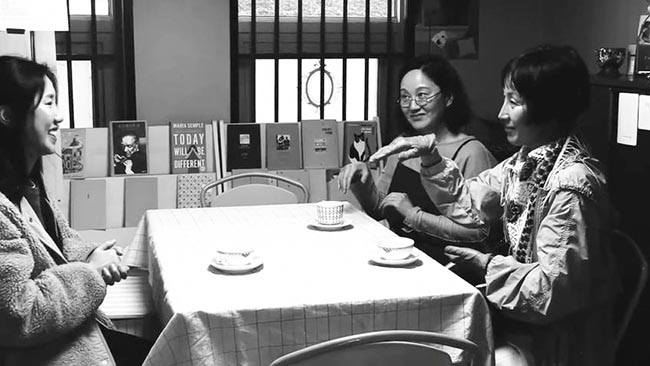
The Novelist's Film
“The Novelist’s Film” follows a story of a famous female novelist directing a film. Hong Sang-soo diverges from the common practice of adapting a novel into a film, and instead has made a film about a novelist trying to make a film. Hong compares Novel and Film.
Let’s see the background. The novelist (Lee Hye-young) moves through the story beginning at her junior colleague’s bookstore, followed by the tower observatory where she meets the film director, the park and restaurant where she meets the actress, the bookstore where everyone gathers and drinks makgeolli, and finally the preview room (movie theater) venue. The novelist learns sign language from a clerk at a bookstore. Lee said, “The days are still bright, but the days will soon set. Let’s go out when the weather is nice.” How is the novelist’s vocabulary expressed in sign language? The gesture language is reminiscent of a silent film, no words. The novelist has just learned the language of cinema.
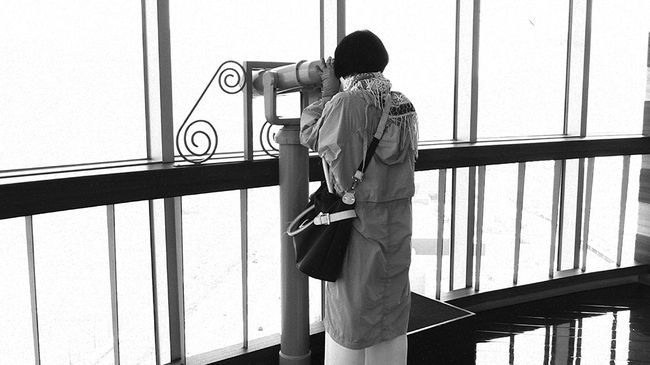
The Novelist's Film
The novelist meets a film director and his wife by chance at the observation deck of the tower. She stares at the people in the park with a telescope. A novel has a directness that is completed through the actions of the fingers, of writing and typing, but a film is an art of capturing a subject with a movie camera. That is, a distance between the subject and the camera is required. It is quite cinematic for the novelist to zoom in on the people on the street from the observatory. Now, the novelist has mastered the function of the camera.
French film critic Alexandre Astruc (1923-2016) used the phrase “Camera Stylo,” which means that the camera is a pen for a film director. This is the difference between a pen (typewriter) and a camera. The novelist and the film director clash over the use of words. She reacts nervously to the commonly used words “(the novelist) is charismatic” and “(the movie actor) is shame.” This is like a hysteria about the adaptation of a novel into a film.
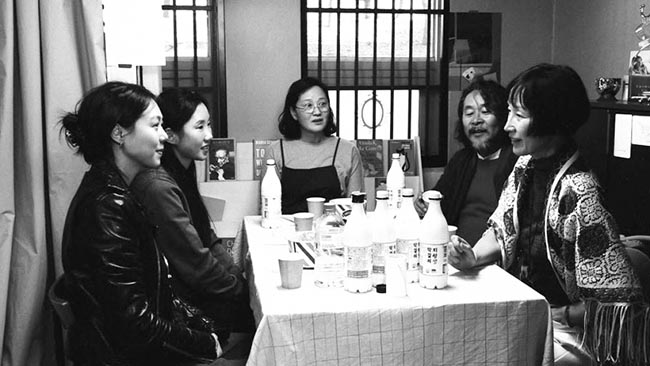
The Novelist's Film
After the film director’s couple went away embarrassed by the “shame” argument, the novelist suggests that the actress make a film. The novelist doesn’t even have a screenplay yet. The scene where the novelist and the actor eat ramen and bibimbap at a restaurant is intriguing. Like ramen (wheat flour-noodles-chopsticks) and bibimbap (rice-namul-gochujang-spoon), novels, which are the product of one person, and films, which are a collaborative art, are different in essence.
Outside the restaurant glass wall, a girl stares at the actress for a long time, then disappears and reappears. The girl outside the window is like a figure on the other side of the screen. The actress goes out to talk to the girl, meanwhile the novelist tastes the actor’s bibimbap. The actress takes action, but the novelist keeps the table head (desk). Is it a metaphor for a novelist to cross over the rice bowl of a filmmaker? The fact that the novelist is always wearing gloves seems to explain the character who tries to protect her hands, in other words, her novel.
Finally, the novelist persuades the actress and the cameraman (the actress’s nephew) to make a movie together. Hong doesn’t show how they are making the film and the actress shows up at the one-person premiere. The film made by the novelists is in color. The actress is smiling brightly as she holds wildflowers and sings “ddan, dda dda dan~” like the melody of the “Wedding March” (Lohengrin, by Richard Wagner). An ordinary middle-aged woman walks around the actress constantly. Why has the novelist included the woman in the frame? Very descriptive but distractive directing for the scene.
The novelist’s camera shoots in color as if it were real, and creates a “prose” direction. However, film is more of a verse (poetry). Black and white film is more poetic. The middle-aged woman is a character (image) that a novelist needs, but she needs to be removed for a film director. Also, in the opening of “The Novelist’s Film” when Lee Hye-young enters the bookstore, we hear an argument between the owner and the clerk. Was it necessary for the scene? Was the whole film made by the novelist?
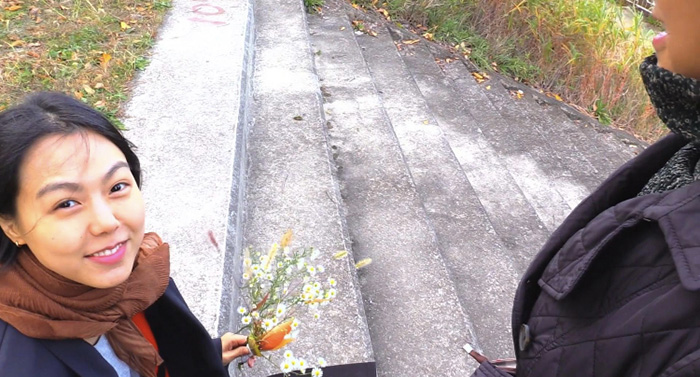
The Novelist's Film
“The Novelist’s Film” teaches authors, critics and audiences what cinema is and how it differs from a novel. Black and white lacks realism, but is poetic. However, Hong Sang-soo's camera’s long takes secure reality. It is also a film that asks how much reality can be reflected in the film medium.
Lee Hye-young is an indeed a “charismatic” actress on screen, and her delicate acting gives weight to the movie. Lee appeared in Hong Sang-soo's “In Front of Your Face” in 2021, and has performed as the main character in three consecutive films, including “Walk Up.” Kim Minhee, Hong’s life partner, also worked as a production manager for the film, and shows refreshing presence.
The Berlin Film Festival dedicated the Silver Bear to Hong Sang-soo’s film for the third year in a row. He won the Best Director Award for “The Woman Who Ran/ 도망친 여자” (2020), Best Screenplay for “Introduction” in 2021, and the Grand Jury Prize for “The Novelist’s Film” in 2022.
Hong has made 28 feature films so far, has achieved recognition and awards at international film festivals, and is a film critics’ darling. However, his films are far from box office successes in Korea. Only a few of Hong’s films exceed 100,000 audiences. “On the Occasion of Remembering the Turning Gate/ 생활의 발견” (2002) with 120,000, “Woman is the Future of Man/ 여자는 남자의 미래다” (2004) with 280,000, and “Woman on the Beach/ 해변의 여인’ (2003) surpassed 230,000. In recent years, he has been making films that have drawn less than 10,000 people.
Is Hong Sang-soo making films for the international film festivals and foreign critics, or for his own satisfaction? Doesn’t he care about the tastes of the public?
Hong is not a fictional storyteller, but a writer with a camera who explores the realistic human condition and the art of film. For him, Hollywood movies are just waste or shame. He prefers cheaply made and personal films. It seems that minimalist Hong Sang-soo has become both an auteur and a genre himself. Nobody does it better than Hong Sang-soo.
“The Novelist’s Film” will be released at the Film Society of Lincoln Center on October 28 after screening at the New York Film Festival (10/7/10). 92 minutes.
by Sukie Park/ NYCultureBeat
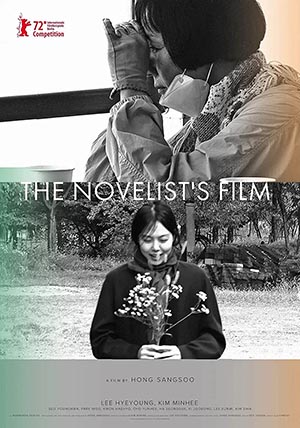
The Novelist’s Film by Hong Sangsoo
FRIDAY, OCTOBER 7 9:00 PM @Walter Reade Theater/ MONDAY, OCTOBER 10 3:30 PM @Howard Gilman Theater
*Opening OCTOBER 28 @Film at Lincoln Center
https://www.filmlinc.org/nyff2022/films/the-novelists-film
*Why Hong Sang-soo's films make me sad: Right Now, Wrong Then





 NYFF60 #MeToo의 도화선 NYT 저널리즘 '그녀가 말했다(She Said)'...
NYFF60 #MeToo의 도화선 NYT 저널리즘 '그녀가 말했다(She Said)'...

